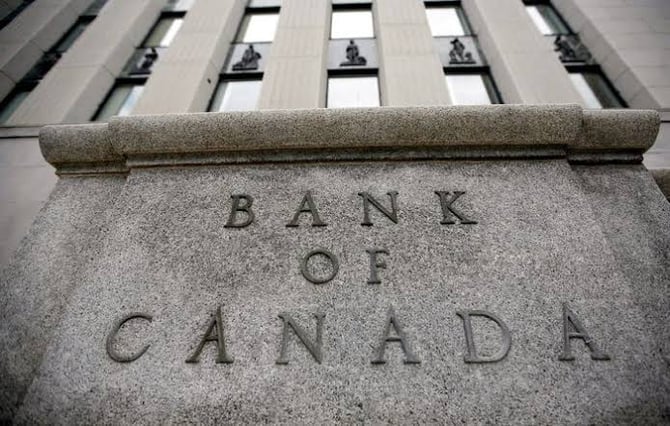Bank of Canada Cuts Rates as Inflation Eases

In a significant shift in monetary policy, the Bank of Canada (BoC) has reduced its key policy rate by 25 basis points to 4.75%, marking the first rate cut in four years.
Many anticipated this decision, which comes as the bank notes positive trends in underlying inflation indicators. For almost a year, the BoC maintained interest rates at a two-decade high of 5%. Still, with inflation easing, Governor Tiff Macklem indicated that such a restrictive monetary policy is no longer necessary.
Following the announcement, financial markets priced in a 42% probability of another cut to 4.5% next month, with a cut in September fully anticipated. Economists, largely predicting this move, saw the Canadian dollar weaken by 0.4% to 1.3733 CAD per USD, or 72.98 US cents, reflecting investor sentiment.
This adjustment aligns the BoC with other central banks, such as Sweden’s Riksbank and the Swiss National Bank, which have also reduced rates amidst easing price pressures. According to market predictions, the European Central Bank is expected to follow suit.
What Does This Mean for Me?
Inflation in Canada has decreased to a three-year low of 2.7% as of April, maintaining levels below 3% for the past four months, although it is still more than the BoC’s 2% target. Macklem suggested that continued easing of inflation could lead to further rate cuts, though he emphasized a cautious, meeting-by-meeting approach to rate decisions.
The BoC’s next rate announcement is scheduled for July 24. Economic growth in Q1 was lower than expected at 1.7%, reinforcing expectations for further rate cuts.
More News
.webp)
Japan’s Rate Shift Is Rippling Through Global Bond Markets
5 days ago

China’s Growth Engine Stalls as Consumers and Investors Pull Back
1 week ago

Egypt’s Recovery Gains Traction as Household Pressure Lingers
2 weeks ago

OECD Warns AI and Tariffs Will Test the Global Economy
3 weeks ago

Zero Tariffs, Higher Drug Bills as US and UK Reset Pharma Trade
3 weeks ago

Catastrophe Bonds Go Global as Climate Risk Meets Yield Hunting
3 weeks ago
.webp)
Canada Shields Steel and Lumber Industries From Tariffs
3 weeks ago

Trump Drops Selected Tariffs in Response to Inflation Pressures
4 weeks ago